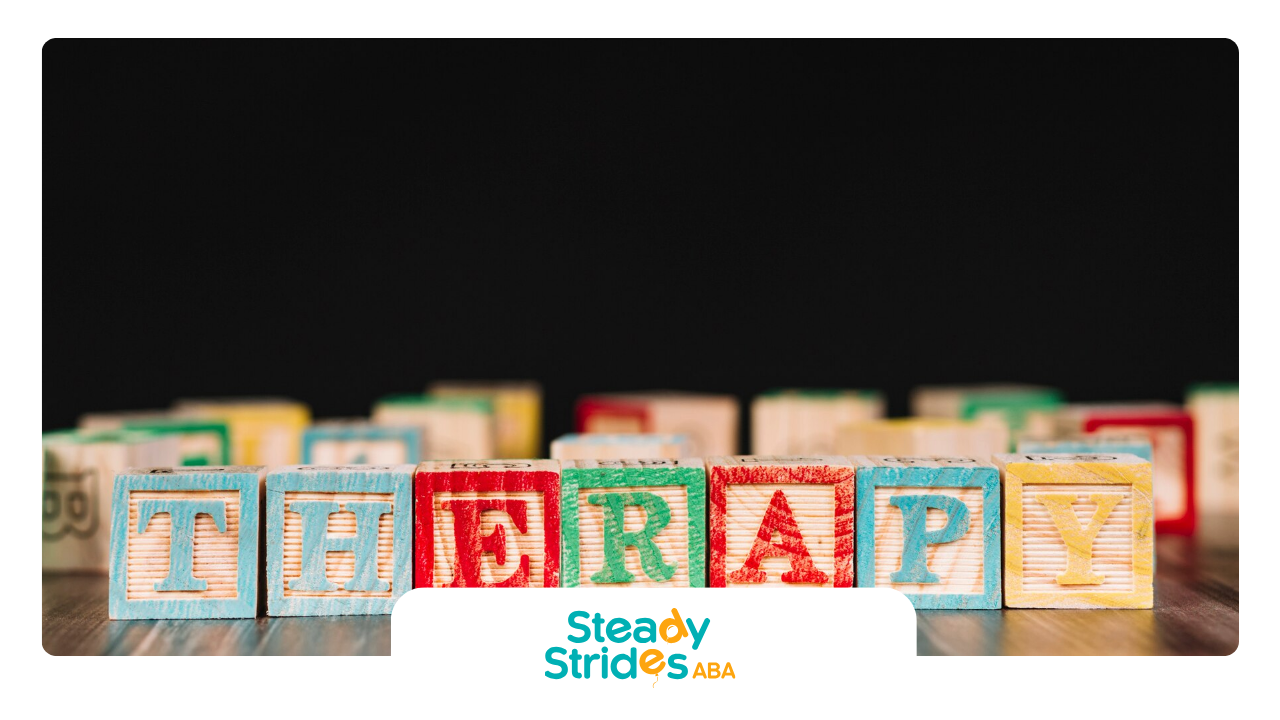Understanding Autism Spectrum Disorder
Definition and Characteristics
Autism Spectrum Disorder (ASD) is a brain and developmental thing that changes how folks relate to others, pick up language, and act. It often pops up before kids hit their second birthday, making it super important to catch it early. The
NIMH says that people with ASD can show a mix of behaviors, like:
| Behavior Type | What It Means |
|---|---|
| Social Communication Difficulties | Trouble picking up on chats and reading social signals |
| Restricted and Repetitive Behaviors | Doing things over and over or getting super into certain stuff |
| Sleep Problems | Issues with catching Z's, leading to sleepless nights or waking up too early |
| Irritability | Getting easily ticked off by sounds, lights, or emotional stuff |
People with ASD might show a range of symptoms, from barely noticeable to more intense, and not all ASD folks are the same, duh! Some might have some learning difficulties, while others have average or above-average smarts but find chitchat and companionship tough. To know more about mild ASD quirks, jump over to our bit on mild autism characteristics.
Diagnosis and Early Signs
Doctors and specialists check out ASD by looking at behaviors and how someone's growing up. Spotting ASD by age two is often spot on. Early detection's the way to go since it opens the door to treatments and help that can make a big difference for the person.
Some early hints that someone might have ASD are:
| Early Sign | What It Means |
|---|---|
| Limited Eye Contact | Doesn't really lock eyes when talking to others |
| Lack of Response to Name | Not tuning in when called |
| Delayed Speech Development | Slower to get the hang of talking than other kids their age |
| Difficulty Understanding Emotions | Hard time recognizing or expressing feelings |
Noticing these can help parents, family, and teachers take action and get the right tests done. For more details on how ASD is diagnosed, check out our piece on autism diagnosis criteria.
Treatment Approaches for ASD
Getting a handle on the different ways to support those with Autism Spectrum Disorder (ASD) can really make a difference for families and pros in finding what works best for each person. The main options include working on behaviors, building skills, and using meds when needed.
Behavioral Interventions
When it comes to action plans for autism, tweaking behavior takes the cake. Experts in schools and medicine often back these methods. One standout is Applied Behavior Analysis (ABA), which is like coaching for better habits. It zooms in on boosting positive actions and skills while putting the kibosh on those less helpful ones, aiming to beef up social and communication skills.
| Behavioral Intervention | Description |
|---|---|
| Applied Behavior Analysis (ABA) | Actively promotes good habits and skills through positive reinforcement and structured lessons. |
Developmental Therapies
These therapies aim to fine-tune certain skills, like chatting and getting around, often mixing it up with behavior strategies. Some popular ones are:
- Speech and Language Therapy:
It's all about ramping up talking and understanding, helping those with ASD to chat more freely.
- Occupational Therapy:
Gets down to teaching the nitty-gritty of everyday tasks like getting dressed or saying "hi," aiming for more independence.
- Early Start Denver Model (ESDM): Tailored for the kiddos, 12 to 48 months old, borrowing from ABA principles and weaving in play to boost talking and social bits.
| Developmental Therapy | Purpose |
|---|---|
| Speech and Language Therapy | Boosts communication. |
| Occupational Therapy | Teaches practical skills and social chops. |
| Early Start Denver Model (ESDM) | Uses play to advance learning. |
Pharmacological Treatments
Sometimes, medication steps in to tackle stuff that comes along with ASD, like feeling anxious, down, or hyper. Useful for curbing things like self-harm, sleep issues, and stomach woes. Families should team up with an ASD-savvy doc to figure out if meds fit the bill for their treatment mix.
| Pharmacological Treatment | Target Symptoms |
|---|---|
| Antidepressants | Alleviate worries and blues. |
| Stimulants | Sharpen focus and attention. |
| Antipsychotics | Soothe behavior and aggression. |
Getting to know these options lets parents, families, and therapists pick the top moves for those dealing with mild autism. More insights into high-functioning autism and mild autism characteristics can offer deeper understanding and tactics. Curious about how autism gets diagnosed? Peek at the autism diagnosis criteria write-up.
Importance of Early Intervention
Jumping in early makes a world of difference for kids with autism. Tackling the issue head-on with an early diagnosis and the right game plan can boost their growth and make life a bit sweeter for all involved.
Impact of Early Diagnosis
Studies show catching signs of autism spectrum disorder (ASD) early — like during those toddler years — can work wonders on lessening symptoms and teaching future skills. Experts usually check a child’s behavior and progress, and can often spot these signs by age 2. Getting ahead of the curve is key to diving into treatments and lining up the right services in a flash.
Some upsides to diagnosing early include:
| Early Diagnosis Benefit | What's the Deal? |
|---|---|
| Fast-Tracked Services | Spotting the issue lets families tap into needed support sooner. |
| One-of-a-Kind Solutions | Interventions can be tailor-made as the child grows. |
| Better Down the Line | Early help improves talking, hanging out with friends, and school performance. |
Kids with autism come in all shapes, sizes, and behaviors. Getting involved early can lessen hurdles for those at lower function levels while boosting support for individuals on the higher end, including folks with high-functioning autism.
Effective Treatment Initiatives
Start treatment for ASD right after diagnosis. Jumping into early intensive treatment can change a kid's future for the better. Teaming up with doctors is a smart move to pin down the best treatment mix.
Treatment options might look like:
| Treatment Kind | What's Involved? |
|---|---|
| Behavior Fixes | This works on skills and cutting down unwanted actions with rewards. |
| Mental Health Support | Therapy chimes in for helping with feelings and making pals. |
| School Assistance | Tailored programs get lined up for the kid's unique learning needs. |
While there's no magic cure for autism, a blend of meds, behavior training, counseling, and education seems the best bet. Sticking with solid treatment paths means families can build an encouraging space that spotlights strengths and faces challenges head-on.
Digging into resources and recognizing mild autism characteristics is a must for families figuring out the ins and outs of life with ASD.
Challenges and Progress in ASD
Autism Spectrum Disorder (ASD) is a bit like a snowflake—no two experiences are exactly alike, but certain hurdles are pretty common. Knowing what these challenges are can be a real game-changer for parents, educators, and anyone in the support squad.
Social Interaction Difficulties
If there’s one thing that sticks out about ASD, it's the
hiccups in social interactions. Making buddies, picking up on social signals, and having smooth, back-and-forth chats can be tough. Kids with autism tend to find these parts tricky, often lagging behind their peers. Instead of pointing at stuff they're jazzed about, they might guide someone else’s hand to what they want, like they're a mini mind reader. And eye contact? Let's just say it’s not topping their to-do list.
| Aspect of Social Interaction | Challenges Experienced |
|---|---|
| Making Friends | Struggling to start and hold onto friendships |
| Interpreting Social Cues | Missing out on body language and facial hints |
| Reciprocal Conversations | Having a tough time with give-and-take chats |
Communication Challenges
In the communication department, ASD folks often hit speed bumps. Words might come a bit late or not at all, and let’s not even talk about nonverbal cues. You might catch them using labels for stuff instead of asking outright or repeating words like a quirky parrot, often without fully getting the chit-chat context.
These quirks can make it tricky for them to convey what they need or feel:
| Communication Aspect | Challenges Experienced |
|---|---|
| Nonverbal Communication | Slow pick-up on gestures |
| Spoken Language | Grappling with using words for social chit-chat |
| Use of Language | Echoing phrases without getting the gist |
Behavioral Patterns
For those with ASD, getting stuck in a groove—think repetitive behaviors or certain obsessions—is all too common. These habits can throw a wrench in the daily gears, especially when adapting to new stuff. Picture them flapping hands like they're trying to lift off or rocking like they're on a boat. Change their routine, and you're asking for drama. Some might get super into a topic, like there's no tomorrow—trains and dinosaurs, anyone?
When caregivers and pros get a handle on these behaviors, they can help set up an environment that’s less "square peg in a round hole" and more "fit like a glove":
| Behavioral Pattern | Examples |
|---|---|
| Repetitive Movements | Hand-flapping, rocking like they're on a seesaw |
| Insistence on Sameness | Meltdowns over tiny routine tweaks |
| Fixation on Topics | Deep dives into subjects like trains or dinos |
By spotting these social, communicative, and behavioral hiccups tied to the autism spectrum, those in the supportive camp can whip up strategies and hacks that brighten the road ahead for individuals with mild autism. Check out our deep dive on mild autism characteristics for more light-bulb info. Curious about how the autism diagnosis game is played? Peek at the autism diagnosis criteria.
Genetic and Environmental Factors
Figuring out what causes Autism Spectrum Disorder (ASD) means looking at both genes and stuff happening around us. Both elements mix up into the complex blend we call autism.
Genetic Contributions to ASD
The genes passed down from family seem to have a big say in whether someone develops ASD. Sometimes genes undergo changes, turning up as key suspects in this condition's origin story. Genetic tests serve as detective tools, finding those gene changes and offering vital clues for a diagnosis.
Research shows that
some unusual gene changes or little common quirks in genes appear in folks with autism. The puzzle pieces of genes and environmental bits interacting still need plenty of discovery work. Importantly, there's zero link between vaccines (including those once containing stuff like thimerosal) and autism popping up.
| Genetic Mischief | What It Means |
|---|---|
| Gene Mutations | Specific gene changes that could lead to ASD |
| Rare Genetic Variations | One-of-a-kind mutations found in some with autism |
| Common Genetic Variants | Typical gene tweaks possibly upping autism risk |
Environmental Risk Factors
The environment also throws its hat in the ring when it comes to autism risk. Studies suggest conditions before and during birth, like a mom's immune hiccups or odd metabolic happenings, could increase autism chances in kiddos.
Environmental no-nos include exposure to heavy metals, off-kilter essential metals, pesticides, and other suspects you’d place in the eco-danger zone.
Big-shot studies, backed by the NIEHS, dive into these eco-factors. They include the CHARGE, MARBLES, and EARLI studies, hunting down culprits like specific prenatal bad guys and looking into the gene-environment tango.
| Environment Suspects | The Lowdown |
|---|---|
| Prenatal Exposures | Effects during pregnancy affecting autism risk |
| Heavy Metals | Lifelong exposure to harmful metals |
| Pesticides and Contaminants | Nasty chemicals linked to a hike in autism |
Knowing both genetic and environmental combo factors is a must for everyone from parents to professionals dealing with autism. If you're keen on mild autism traits, hop over to our piece on mild autism characteristics. Plus, understanding autism diagnosis criteria lends a hand in spotting those early signs and grabbing the right help.
Ongoing Research on ASD
They're hot on the trail of Autism Spectrum Disorder (ASD), always discovering fresh insights into the condition's many twists and turns. Two big players in the game of current research are studies of the environment and teamwork efforts.
Environmental Studies
Ever wonder if the world around us has a role in something like autism? Well, it just might. The National Institute of Environmental Health Sciences (NIEHS) has been knee-deep in figuring out how different things in the environment might affect autism's development for the past twenty years. Here's where they're digging:
- What air pollution's doing
- What happens before you're even born
- What metals, pesticides, and nasty stuff are doing
- How the food on your plate might be lowering autism risk
They're after a better grasp of how all these environmental goodies mix it up with your genes and might kick off ASD. Want more dirt on those risk factors? Take a peek at mild autism characteristics.
| Environmental Factors | Areas of Study |
|---|---|
| Air Pollution | Checking out links with autism numbers |
| Prenatal Conditions | Peeking into mom's health during pregnancy |
| Metal Exposure | Seeing how heavy metals mess with kid growth |
| Nutrition | Looking at diet's sway on autism risk |
Collaborative Research Efforts
When it comes to advancing our understanding of autism, working together is the name of the game. Scientists, docs, and organizations from all over throw their hats in the ring, both in the States and beyond. What's cooking in these team-ups:
- Crafting accurate prediction tools for autism
- Building a solid playbook for diagnosing autism
- Swapping stories and strategies for treatments and therapies
This team spirit supercharges how we understand autism and use different treatment tactics. Need some pointers on diagnosis? Check out our guide on autism diagnosis criteria.
Through digging into the environment and working together, ongoing autism research is on a mission to crack the code on this condition, paving the way for better support and treatments for folks with various forms of autism, like those with high-functioning autism.












